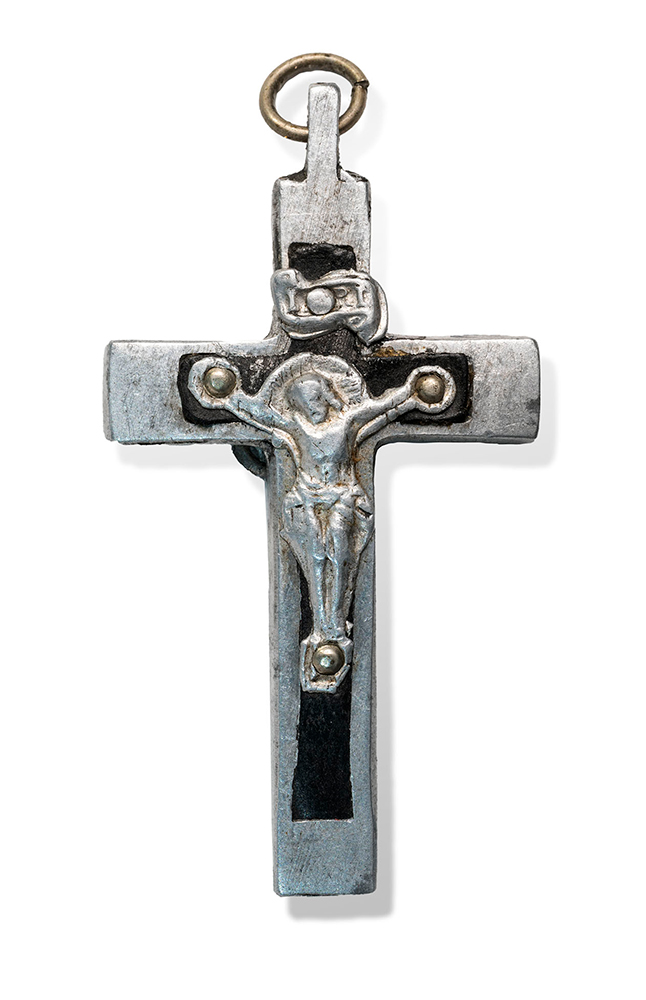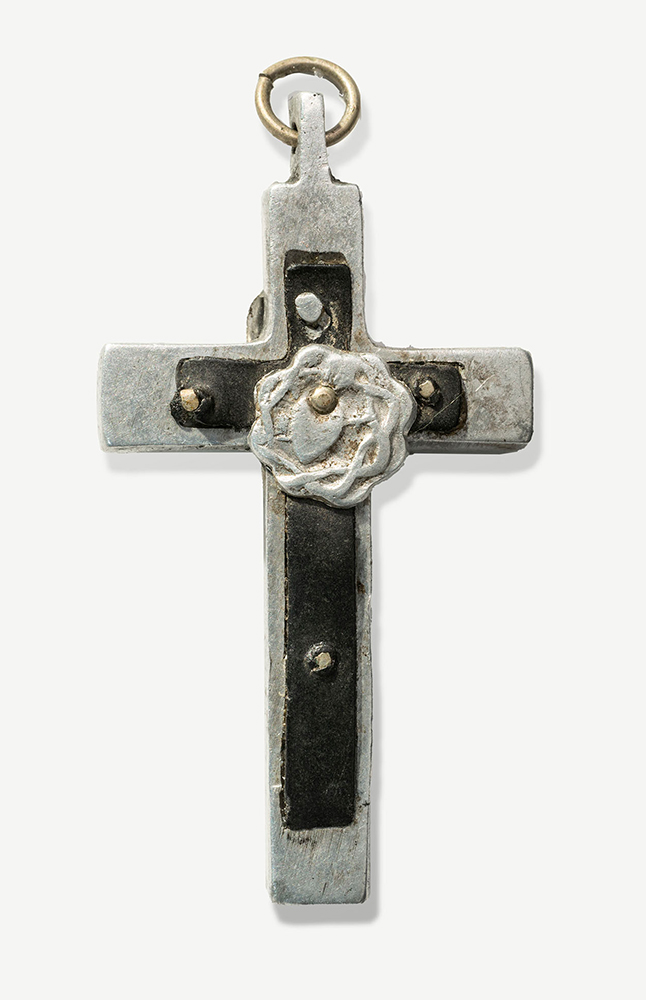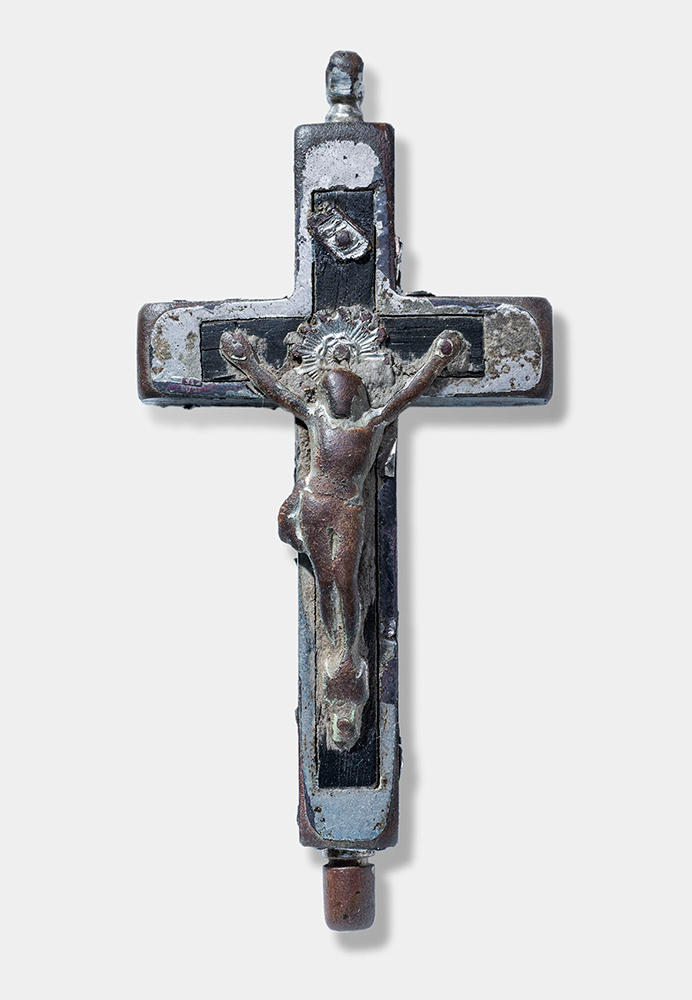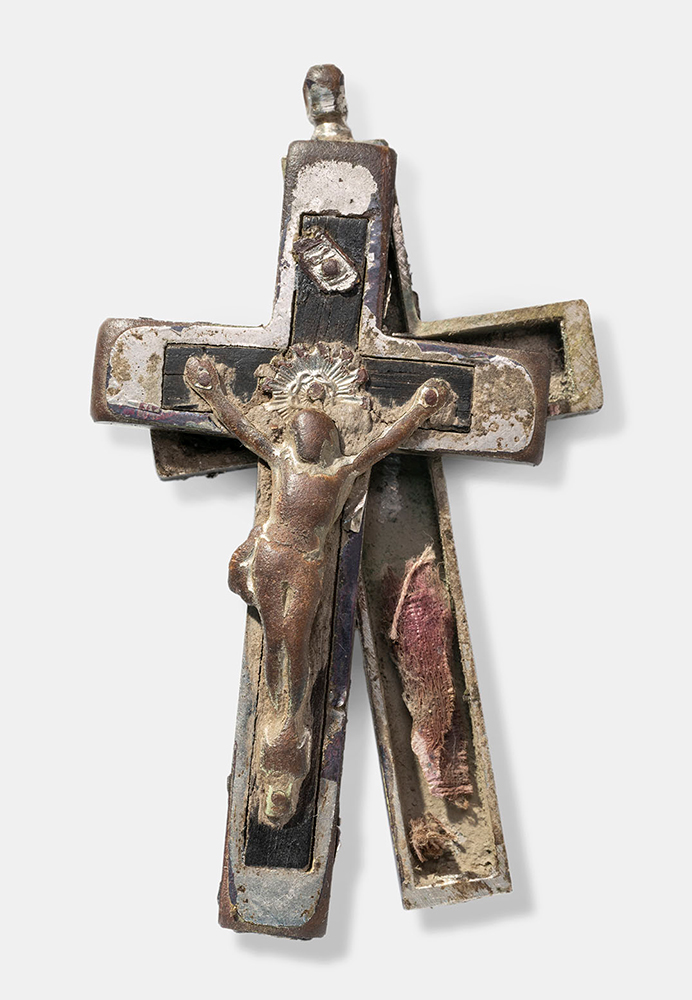Crucifixes and Rosaries
“God will take care of me, Mother. I trust in Him with all my heart and soul. May He keep you well and safe and happy and guide me back to you some day. I am not afraid if He sees fit to take me. I am His and He will do with me as He sees fit.”
—Edmond Genet, writing to his mother thanking her for the cross she sent him while he was waiting to sail to France.
Edmond Genet deserted the U.S. Navy in 1915 to become a pilot with the Lafayette Escadrille in France. He became the first American killed in action after the U.S. entered the war in 1917, shot down by German anti-aircraft artillery.
To desert is to leave the military without permission.
The wearing of a cross dates to the ancient Egyptian ankh cross, the hieroglyphic symbol of life. In Christianity, the cross symbolizes Jesus Christ's crucifixion and defeat of death through resurrection. Crosses come in many forms, crosses with Jesus enduring crucifixion are known as crucifixes. Many Christians serving in World War I wore crosses in their everyday lives. When called to fight, these emblems of faith went with men into battle.
Lieutenant's crucifix


Germany
c. 1914-1917
Object ID: 2021.171.1
National WWI Museum and Memorial
If a soldier or sailor from a majority Roman Catholic region did not wear a crucifix when he enlisted, at some point a chaplain likely gave him one. Some servicemembers felt a cross connected them to the divine, while others thought the object lucky. Those who survived the war often kept crucifixes as souvenirs of service; many died and were buried during the war wearing them. There are many accounts from World War I of crucifixes saving lives. In March 1917 a British newspaper reported that a crucifix saved the life of Corporal Goulden of the Royal Engineers, when a German bullet struck the crucifix he kept in his breast pocket and broke it in two.
Chaplain's rosary


United States
c. 1917-1918
Object ID: 2023.51.1
National WWI Museum and Memorial
The Rosary is both a set of prayers and a physical string of knots or beads used by Catholics. Family members frequently sent rosaries to their loved ones in service. Companies, recognizing a need, manufactured rugged “pull chain” rosaries like the one here. Modeled after the pull chains commonly found on lamps at the time, the rosaries were made for durability in transport, use and battle.
Crucifix reliquary


Austria-Hungary
c. 1914-1918
Object ID: 2023.75.1
National WWI Museum and Memorial
Relics are part of a deceased holy person's body or belongings; a reliquary is a container for holy relics. The Christian faith contains many accounts of the relics of saints bringing miracles – a spiritual link between life, death and God. This crucifix reveals a relic, a piece of small purple silk. Once the knob at the base is unscrewed, the top slides over to reveal it. The Austro-Hungarian soldier who carried this reliquary kept it close in hopes of protection, and as a devotion of faith.
